Nexus 7 (2013) - Mini Review
by Brian Klug on July 27, 2013 12:54 AM EST- Posted in
- Tablets
- Snapdragon
- Qualcomm
- Android
- Mobile
- APQ8064
- Nexus 7
- Android 4.3
Last year the Nexus 7 debuted with a Tegra 3 SoC, which for reminder consisted of a 4+1 architecture of ARM Cortex A9 CPUs, with the 4 A9s built on 40nm G, and the +1 “shadow core” A9 built on 40nm LP (TSMC’s 40 LPG process), accompanied by ULP GeForce GPU with 12 cores running at a max GPU clock of 416 MHz. The exact SoC was NVIDIA’s Tegra 3 T30L, which could run one A9 at up to 1.3 GHz and all A9s at up to 1.2 GHz.
Rather than the relatively logical upgrade path of going to NVIDIA’s Tegra 4 SoC (I’ve heard all manner of speculation about what happened there), the new Nexus 7 switches to Qualcomm’s APQ8064–1AA, a version with 4 Krait 300 CPU cores (yes, Krait 300, not 200) running at up to 1.5 GHz and Adreno 320 graphics. Rather than use a PoP and LPDDR2, this specific APQ8064 variant goes to PCDDR3L–1600 MHz instead, including 4, 4Gb discrete 1.35V SK-hynix DRAM devices off to the side (more on the opposite side of the PCB) adding up to 2 GB of RAM. Qualcomm's Snapdragon S4 Pro and Snapdragon 600 branding gets confused here, although Qualcomm is calling the APQ8064 inside the Nexus 7 (2013) S4 Pro, it's more like an underclocked or lower binned Snapdragon 600.
At this point APQ8064 is probably the most well understood SoC in recent memory (so much so that I’m pining for devices to include something different just from an academic perspective) so I’ll spare the very verbal discussion about its performance.
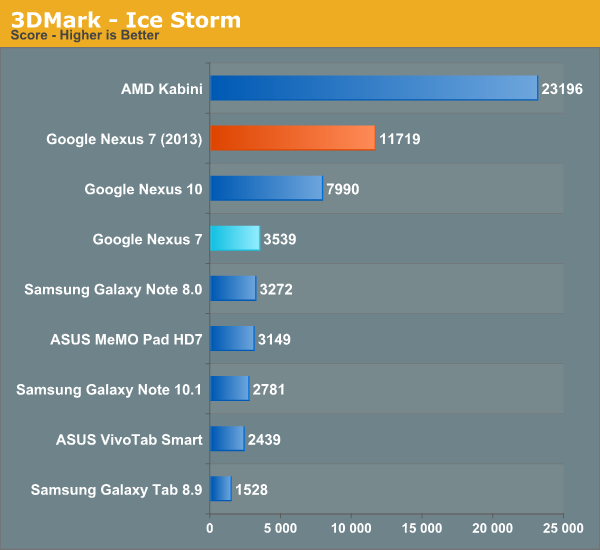



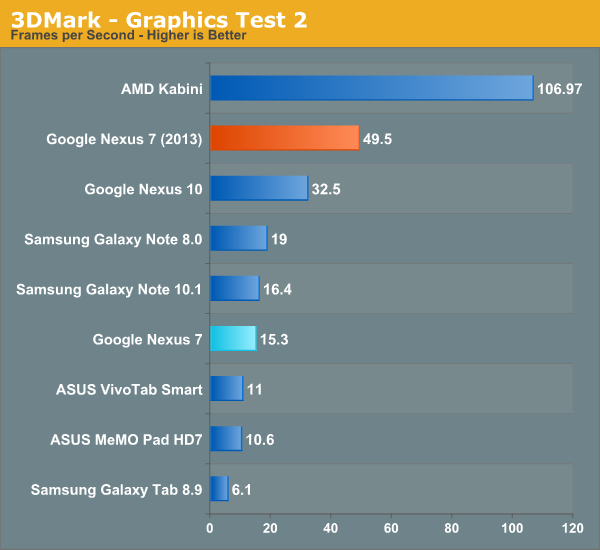
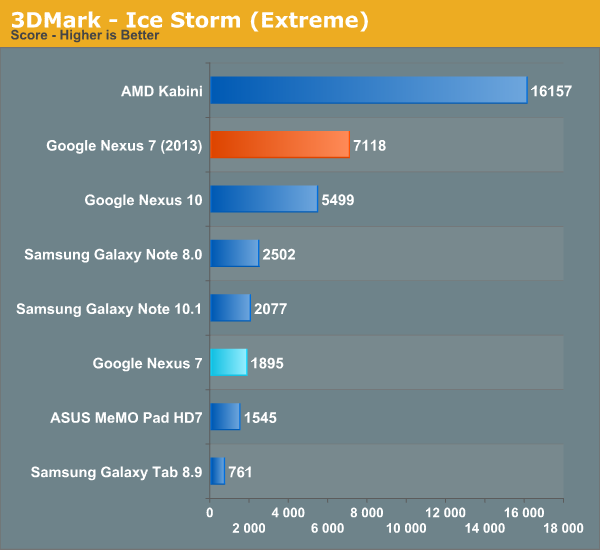

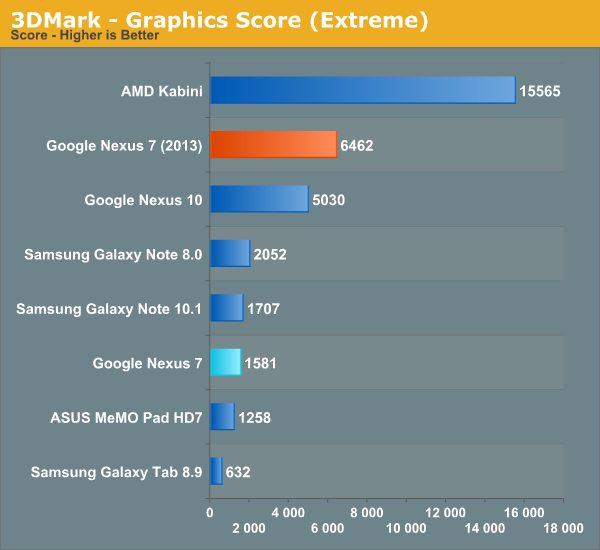

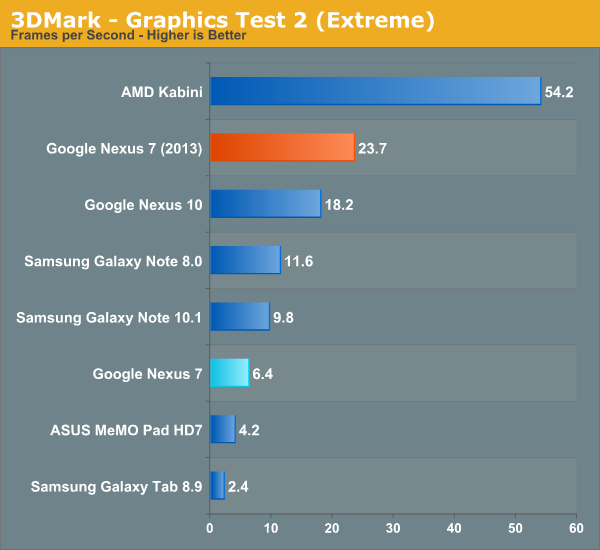


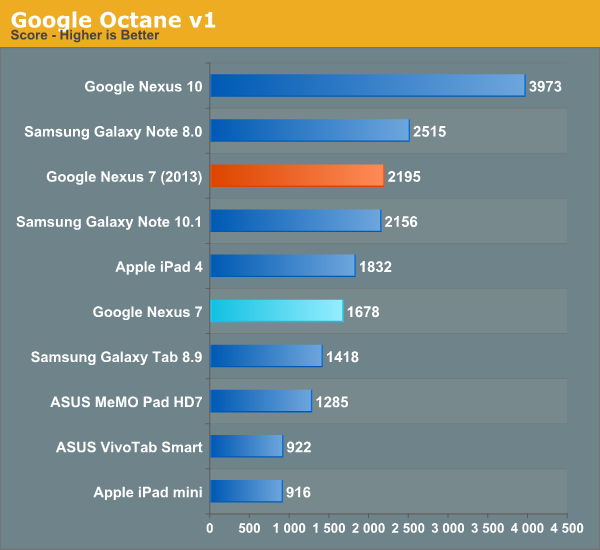
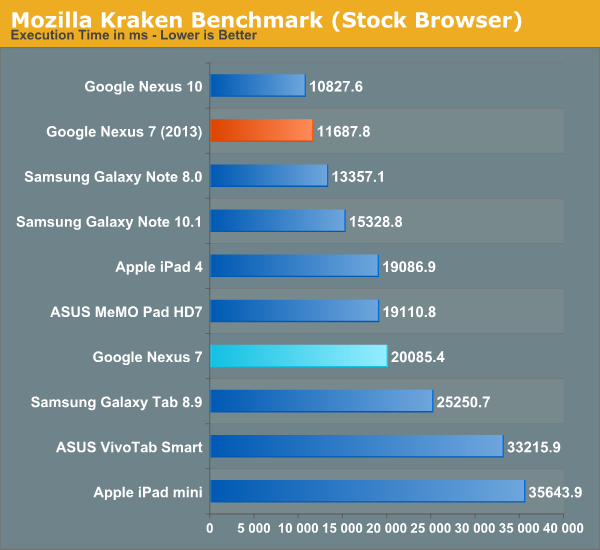
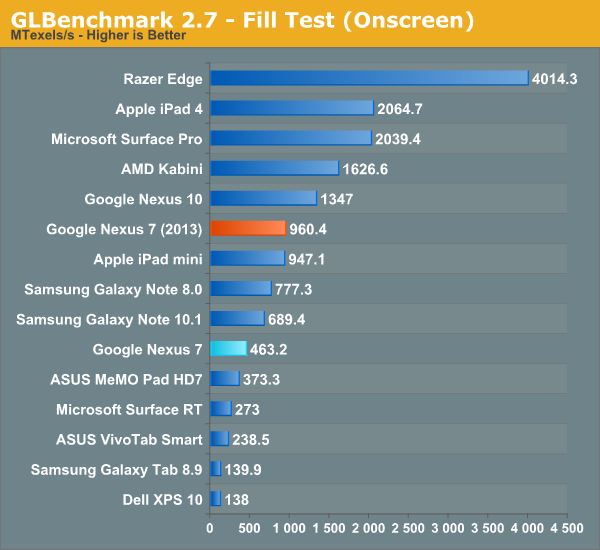
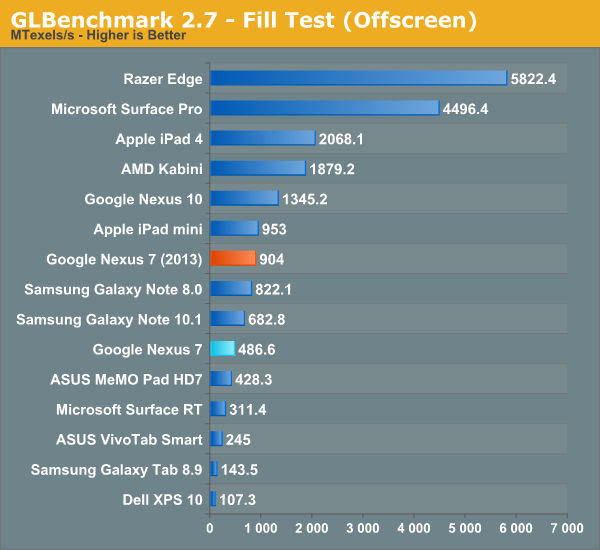
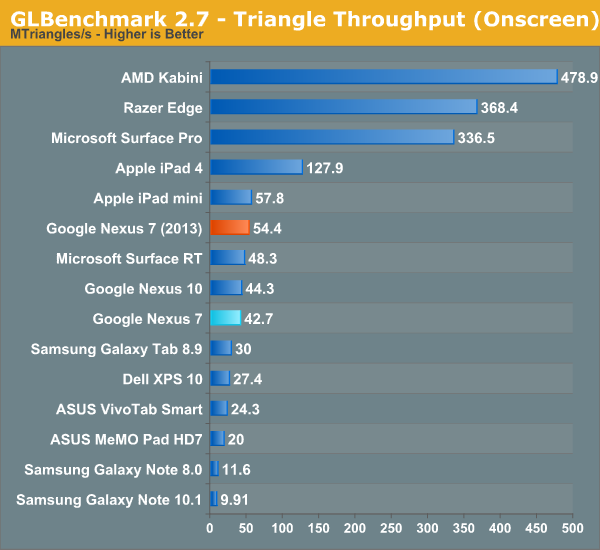
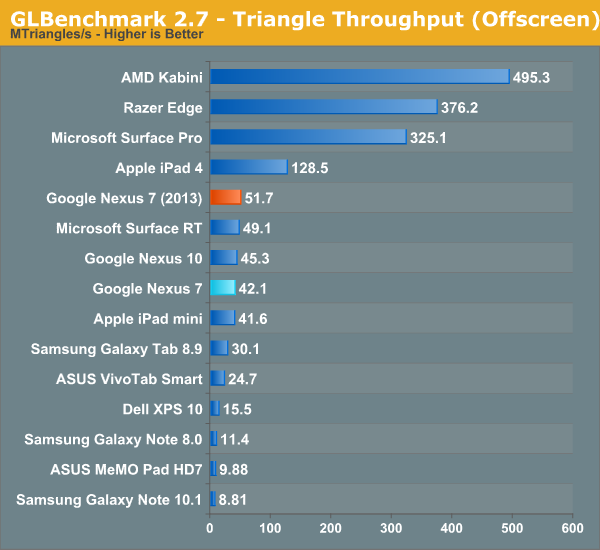
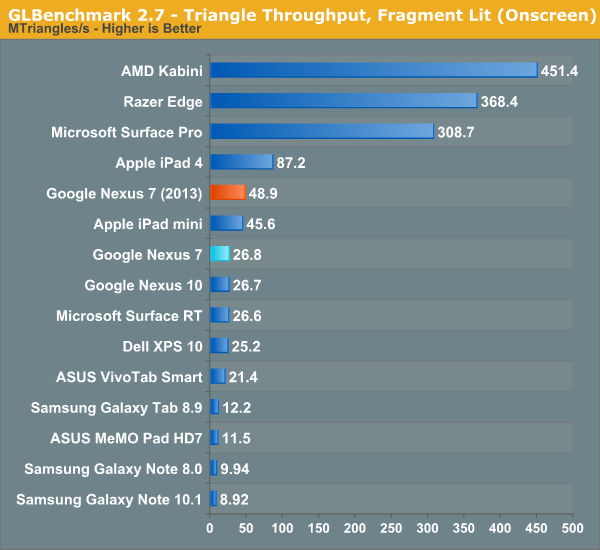
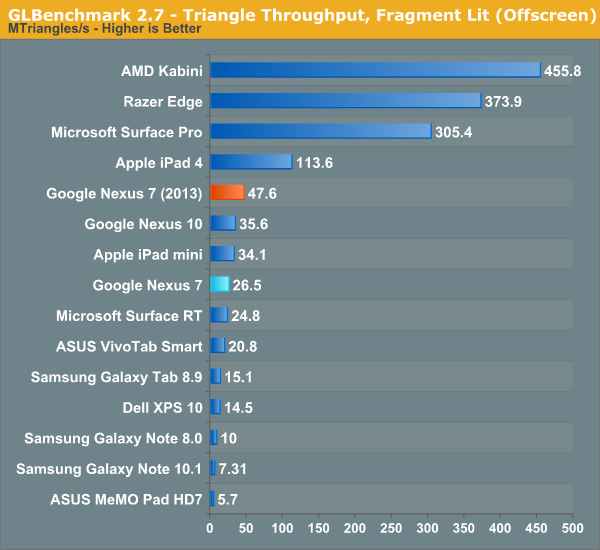
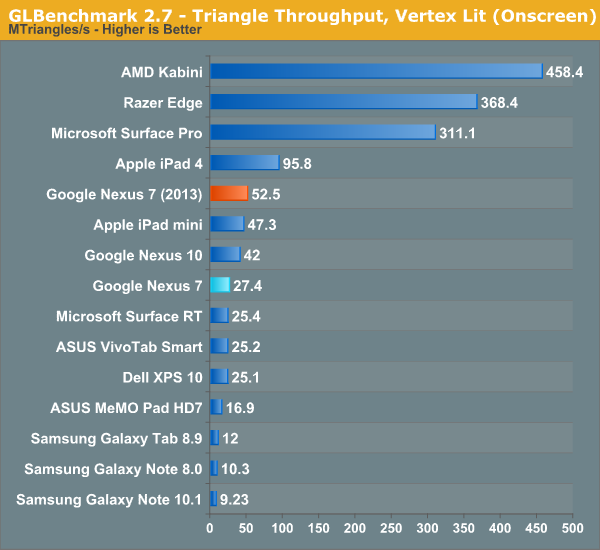
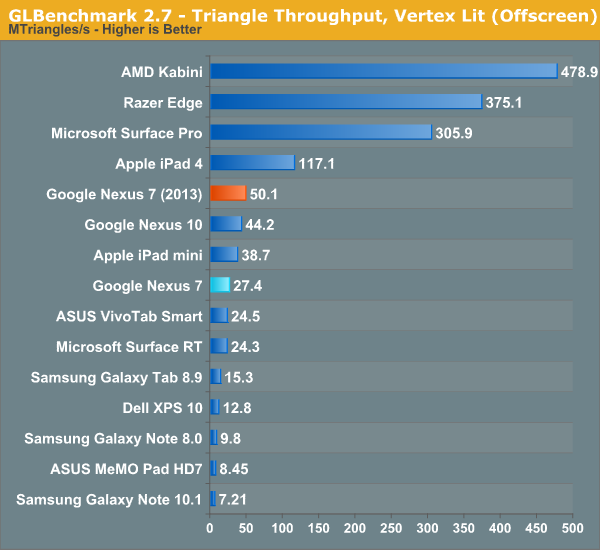

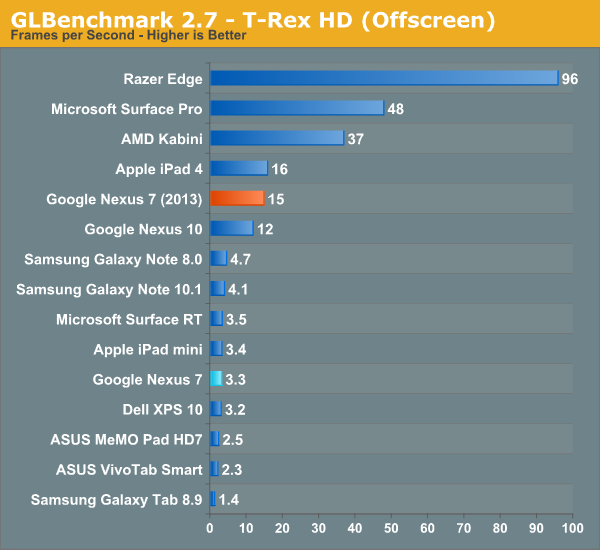
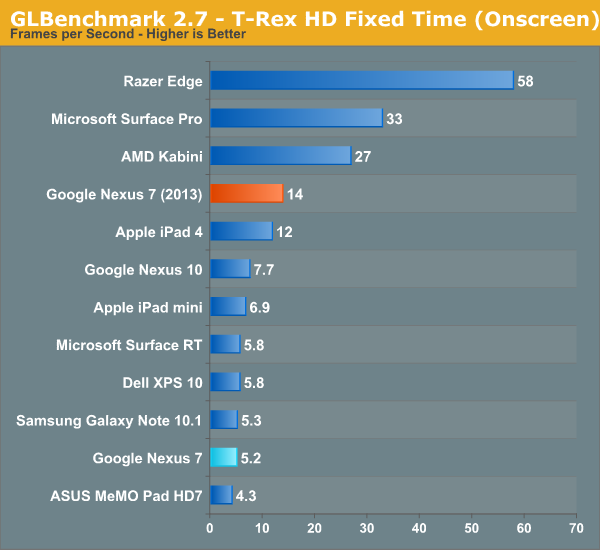
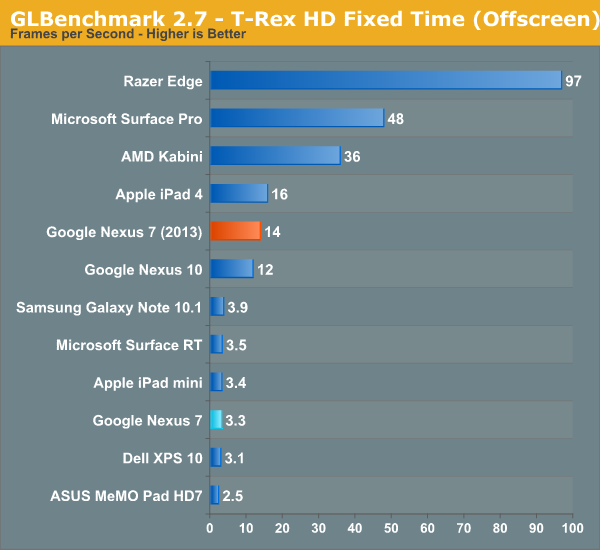
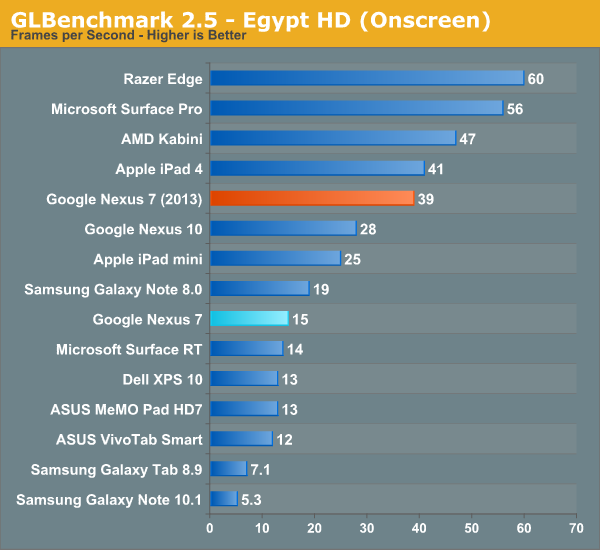
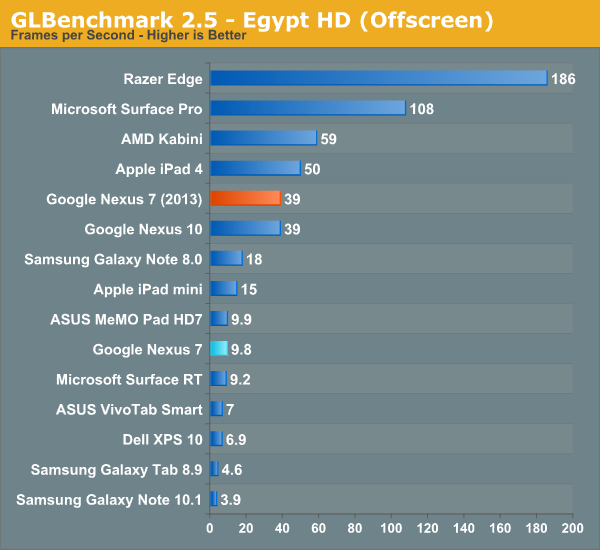
Suffice it to say, moving from 1.2–1.3 GHz Tegra 3 to 1.5 GHz APQ8064 represents a big jump forwards in performance. Google claimed 1.8x improvement on CPU performance, and 4x improvement on GPU, which gets validated pretty much consistently through the benchmarks. I never felt like Tegra 3 was a slouch by any means (performance was more I/O bound on the OG Nexus 7, which we’ll talk about in a moment), but the new Nexus 7 has ample performance for the considerable increase in screen resolution.
Dat eMMC
It wasn’t any secret with the original Nexus 7 that much of the real world performance was gated by storage I/O throughput – we wrote about it after all – and storage performance was a common complaint while multitasking on a few other previous and similar era ASUS tablets. Most of the time performance was acceptable, and for $200 you can’t complain too much about things, the issue was that further on in the life of the tablet performance began degrading somewhat notably, leading to complaints.
Obviously the first thing I did on the Nexus 7 (2013) was run Androbench with the same 100 MB settings to test and see what out of box I/O performance looks like. Things are much better with the new Nexus 7 than they were with the previous one, so at a high level all is good.
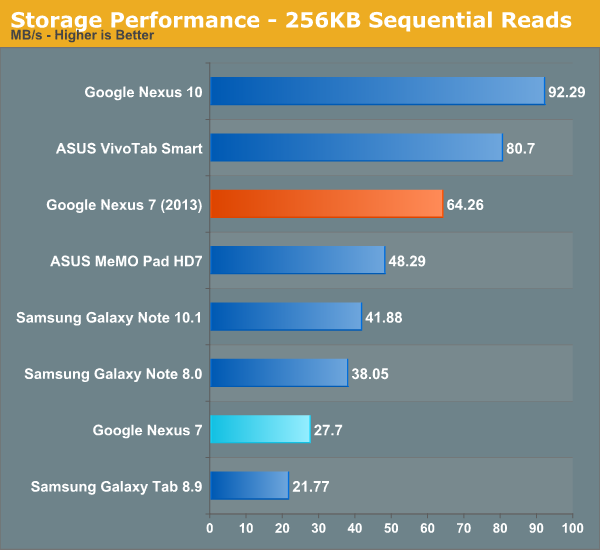
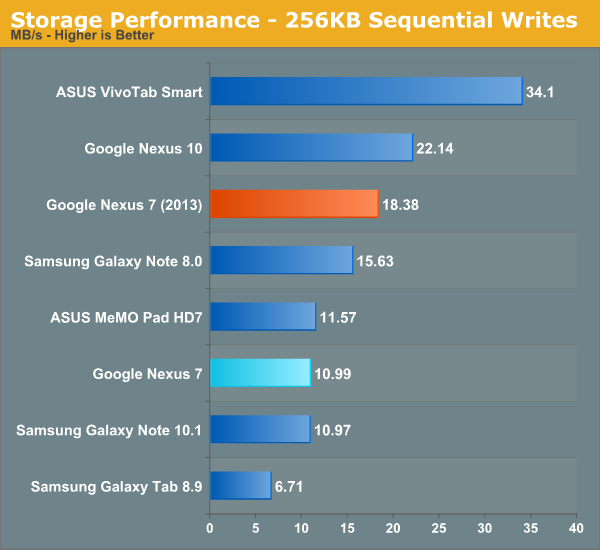
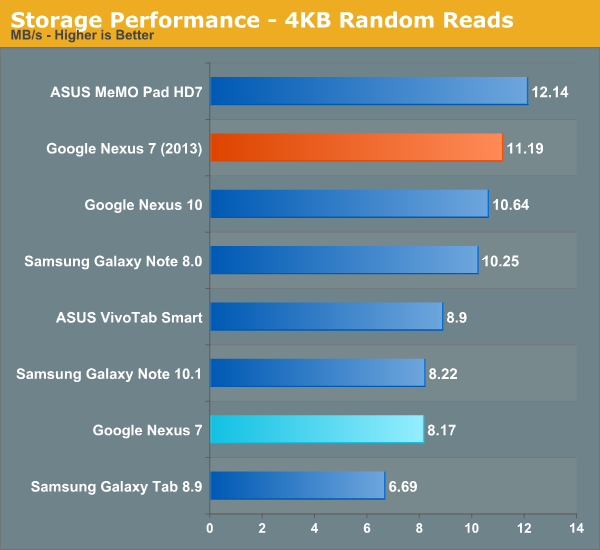

The story actually is a bit more involved however. One of the big problems was that the slowness which occurred with the prior Nexus 7 took device aging to appear – it was great for the first few months, but after you started loading it things tailed off. The new Nexus 7 (2013) with Android 4.3 includes support for fstrim, essentially idle garbage collection, which TRIMs the eMMC when a few conditions are met – the device is idle, screen off, and battery above roughly 70-percent. I’m told that TRIM support has been part of the eMMC standard since around version 4.2, it was just a matter of enabling it in software. The result is that the new Nexus 7 shouldn’t have these aging affects at all. Better yet, fstrim support has also been added to the old Nexus 7 with as of the Android 4.3 update, so if you’ve got a Nexus 7 that feels slow, I/O performance should get better after fstrim runs in the background. I'm checking on whether the other Nexus devices have also had TRIM support added. I would consider the slow storage aging problem fixed as of now, and Google took the eMMC and storage I/O performance issues with the previous Nexus 7 to heart for this version.


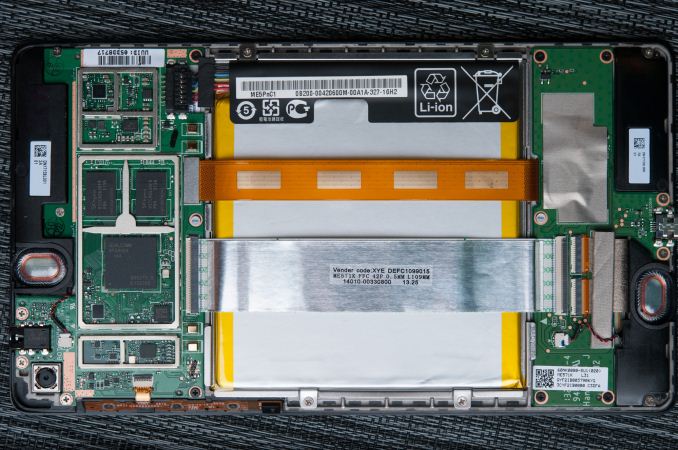
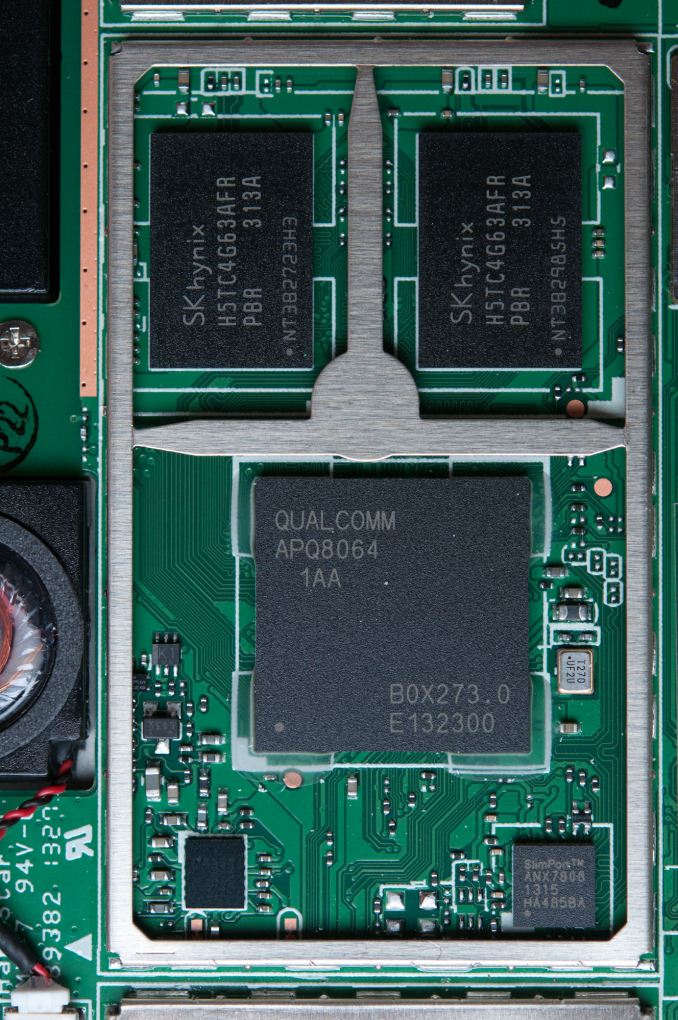














252 Comments
View All Comments
Krysto - Sunday, July 28, 2013 - link
Or maybe you're just not paying attention. They said they sold over 7 million Nexus 7's.abazigal - Sunday, July 28, 2013 - link
Is there any mention of its battery life in real-world tests?kmand - Sunday, July 28, 2013 - link
Does it support NEON? I know the Tegra-3 did.Wombat2013 - Sunday, July 28, 2013 - link
It would be helpful if the upcoming full review would address:- OTG compliance
- Slimport output testing
There have been varying opinions online about whether/how well these features work on the Nexus 7 (2013). (Not surprising - opinions, not AT real testing..)
Written from my new Nexus 7.
bznotins - Sunday, July 28, 2013 - link
Thanks for the great review, Brian. Definitely "mini" in name only and typical of why Anandtech is my most reliable tech review source.On going to hold-out for the LTE version with the hope that it can/will allow me to use it as a mobiles hotspot and replace my TMob Sonic 2.0 LTE hotspot. I know the 4G Nexus 7 stock wasn't capable of operating as a hotspot but I have my fingers crossed for the new LTE version.
Any speculation on a release date? "Weeks" feels pretty nonspecific.
yun - Sunday, July 28, 2013 - link
Pity no Tegra 4, my friend Squall-le am disappoint.kgh00007 - Sunday, July 28, 2013 - link
Hi, what link speed does the new nexus 7 connect with on 2.4 & 5Ghz? The OG nexus 7 only connected at 65Mbps?Cheers!
jojo98 - Sunday, July 28, 2013 - link
When testing WiFi, average throughput is nice but you should measure the variance as well. Even better would be under controlled interference if you have a lab setup to do it. Maybe a time graph vs data rate and latency would be nice.I'd rather have a consistent 20 Mbps connection than 100 Mbps average one that varies a lot in both data rate and latency. These kinds of things will show in voice and video over IP applications where the quality will be reduced when even only a short hit in speed and or latency occurs. Streaming sites like Netflix, Amazon and others will also reduce quality. The low quality will persist for a while even when your WiFi link gets better right after the dip.
MarkP23 - Monday, July 29, 2013 - link
Yes, only testing the average WiFi throughput is like only testing sequential accesses to SSDs when it comes to gauging what real world experience would be like.We need to know how stable the connection is over a prolonged amount of time (how much latency and data rate changes). All too often my WiFi connection blips during a Skype call or video stream causing the app to lower the quality. Even if it's only a momentary blip, most applications' algorithms won't immediately go back to the original quality. It may take minutes or until you reconnect because you can't stand watching blocky video and tinny audio.
bobak - Sunday, July 28, 2013 - link
Whilst AnadTech's articles and reviews are always excellent, the first place I go to read up on devices / components, a simple fact remains.Companies can bring out as many new android phones as they like, high spec, huge screens, packed with features... but they all run android. I tried it, i didn't like it. I tried it again and again and I still absolutely hate it. It feels old, clunky, disjointed, overcomplicated, ugly and not at all intuitive.
I'll be the first to admit, this is entirely based on my personal opinion, however every single person I know who has bought an android phone has turned round to me and asked "how much do you reckon i'll get for this on ebay... i hate it" within the first month.
Great article, i'll keep on reading them and enjoying them, but I just feel android misses the mark by a long shot. I'd rather a Windows phone - at least the OS looks and feels nice.
I'm well aware i'll probably get a load of replies telling me how I'm a fanboy or hater or whatever, but at least I tried to like it with an open mind, several times.